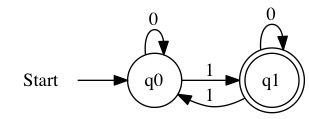Deque
Deque¶
You might have noticed there were many similarities between the stack and the queue. In fact, there are so many sometime we combine the data structures.
A deque is a data structure that has the features of both a queue and a stack. It’s name is pronounced “deck”. It is short for Double-Ended Queue. It is common to include a deque in a library. Instead of coding and testing two data structures, you can make one and let the programmer use it in either way.
The deque can do the following.
Initialize empty deque
Check if empty
Look at first element
Look at last element
Add to front
Add to back
Remove from front
Remove from back
To implement a deque we need a node with two pointers. We need to be able to move forward and backward. This way we can act like it is stack or a queue at any point.
This code it more complex than either of the other data structures, but that extra work in development will get us both data structures and additional features neither has.
We start with a node that as two pointers. We need a next and a previous.
//The Node Data Structure
struct Node struct {
int value; //The Value Stored at this node
Node* next; //Pointer to the next value
Node* previous; //Pointer to previous value
};
The deque needs a head and a tail, just like a queue.
//A Deque data structure
struct Deque {
Node* head; //The front
Node* tail; //The back
};
To create a new deque, both pointers point to the null memory address.
Function newDeque()
//Allocate Memory
Let D be a pointer to a new Deque
//Set points to Null
D's head = Null
D's tail = Null
//Return pointer to queue
Return D
End Function
To determine if the deque is empty, we just need to see if the head is nil.
Function isEmpty(Deque* D)
Return D's head is Null
End Function
We need to be able to look at the front element. This is just whatever head points to. To keep the code simple, we avoid error checking and return a -1 on an empty deque.
Function front(Deque* D)
If D's head is Null then
Return -1
End If
Return D's head's value
End Function
We also need to look at the back. It is a mirror of the front.
Function back(Deque* D)
If D's tail is Null then
Return -1
End If
Return D's tail's value
End Function
To add a new element to the front, we create a new node. If the deque is empty, we can make it the only element. Otherwise, we need to update pointers. Notice that we update next and previous. We always need to be ready for the list to be used backwards.
Function pushFront(Deque* D, int v)
Let newNode be a pointer to a new Node
newNode's value = v
newNode's next = Null
newNode's previous = Null
//If the head is null, only node
If D's head is Null then
D's head = newNode
D's tail = newNode
return
End If
//Add to front
newNode's next = D's head
D's head's previous = newNode
D's head = newNode
End Function
Adding to the back looks very similar. We basically swapped head and tail and next and previous.
Function pushBack(Deque* D, int v)
Let newNode be a pointer to a new Node
newNode's value = v
newNode's next = Null
newNode's previous = Null
//If tail is empty, only node
If D's tail is Null then
D's head = newNode
D's tail = newNode
return
End If
//Add to back
D's tail's next = newNode
newNode's previous = D's tail
D's tail = newNode
End Function
We can also remove elements. Again, both operations are very close in design. We need to check for an empty list. We need to deal with removing the last item in the list. Finally, we need to update pointers. Again, we need to remember to update both next and previous.
Function popFront(Deque* D)
//Check Empty
If isEmpty(D) then
Return
End If
temp = D's head
D's head = temp's next
delete memory used by temp
If D's head is null then
D's tail = null \\The list is empty
Else
D's head's previous = null
EndIf
End Function
Removing from the back looks very similar.
Function popBack(Deque* D)
//Check Empty
If isEmpty(D) then
Return
End If
temp = D's tail
D's tail = temp's previous
delete memory used by temp
If D's tail is null then
D's head = null \\The list is empty
Else
D's tail's next = null
EndIf
End Function
These are all constant time operations. We have one data structure that can act like both a stack and a queue. It can even switch between the two at any time. This gives the program significantly more flexibility when they are designing algorithms.
Operation |
Runtime |
|---|---|
|
\(O(1)\) |
|
\(O(1)\) |
|
\(O(1)\) |
|
\(O(1)\) |
|
\(O(1)\) |
|
\(O(1)\) |
|
\(O(1)\) |
|
\(O(1)\) |
